The content of the article
- 1 How to assemble a plant?
- 2 The healing abilities of elecampane root
- 3 Healing elecampane will help patients!
- 4 Swimming in the infusion of elecampane - a special useful procedure
- 5 Sore joints
- 6 Skin diseases
- 7 Tuberculosis treatment
- 8 In common with other medicinal herbs
- 9 Especially for women
- 10 Bans
- 11 Video: medicinal properties of elecampane
Elecampane belongs to the Astrov family, although its second name is wild sunflower. It is possible to distinguish it among other wildly growing medicinal plants by a thick fleshy rhizome, and its roots are long, which is good for humans. After all, it is in them that the main useful substances are hidden, which glorified elecampane. Use it not only in traditional medicine. Doctors also officially recognized that many unique healing properties are hidden in the roots.
The stems of the plant are slightly branched in the upper part, straight and angular. Its leaves at the very roots are quite large, and on the petioles can be up to 50 cm. They have an elongated shape with pointed tips. He has very beautiful colors: yellow with a sunny tint or with rich orange hues. They are collected in large baskets, and are located on the top of the stem and branches. If you measure them, it turns out that the diameter of the flowers is about 8 cm. Flowering usually falls in July - August.
Elecampane stands out for its height, can grow up to two meters and belongs to the perennial family. In fact, it is grassy, although it has the appearance of a separate bush.
How to assemble a plant?
They collect it for medicinal purposes in many areas, especially where there is black soil, as well as on wet meadows, river banks, in clusters of bushes, quarries. The main thing is that there should be some kind of pond nearby. But it can also be found on salt marshes. Its wild reserves are gradually decreasing, but many healers grow it as a cultivated plant. Elecampane is not whimsical at all, and does not even require timely watering; it grows quickly in beds.
Herbalists for medicinal purposes try to use a plant in which:
- The highest growth and stems are wide and straight - which means that the root will be the best.
- The age is more than three years, which means that the elecampane has gained strength, and it contains many of those useful substances that are not in the young grass.
In order for the plant to benefit, it must be dug up, but very carefully, because the main thing is not to damage the root system. When the elecampane was removed from the earth, it is shaken, the stem and rhizome are removed. Remains the root. If it turned out to be wide and strong, it is cut, so that it can then be laid out on thick white paper and allowed to dry well. At this time, the best place for the roots is in the sun, where they should lie for about three days. But there is an opinion that the roots should be in the shade in the draft while they are drying. Herbalists do not advise using an oven for drying, since all the medicinal properties of elecampane will disappear in it.
The roots are usually harvested in autumn or early spring. Their taste is bitter and also pungent, but all these shortcomings compensate for the great therapeutic benefits.
The healing abilities of elecampane root
All therapeutic secrets are revealed during the study of roots and rhizomes. They have:
- essential oil. It is presented in the form of crystals, the content is more than 3 percent;
- polysaccharides, for example, more than 40 percent of inulin;
- vitamins, most E;
- triterpenes;
- organic acids;
- gums;
- tar, bitterness and mucus;
- lactones;
- saponins and various beneficial substances.
Used for many centuries, elecampane has established itself on the positive side as a means of relieving inflammatory processes, killing fungal, bacterial and microbial infections,able to stop bleeding and relieve an allergic reaction.
The plant also has such actions: expectorant, diuretic, astringent. It may be sweatshops, but the truth is not very strong.
There are still important properties of elecampane, which significantly improve the functioning of some human organs. These include plant abilities:
- reduce the threatening permeability of capillaries;
- strengthen bile formation if necessary, then promote the active secretion of bile;
- reduce intestinal motor function;
- effectively stimulate the secretion of the intestine, stomach or pancreas;
- improve the processes that occur during digestion;
- prevent blood clots;
- stimulating effect on the ovaries, as well as the uterus.
In the medical world, this medicinal plant is a recognized remedy for bronchitis and tracheitis, bronchial asthma, many diseases of the respiratory tract, especially catarrh, pneumonia and flu.
Fights elecampane with helminthic invasion. Plants such as tapeworm, roundworms and dwarf tapeworms are especially afraid of plants.
The root of the elecampane is saved by patients who have such ailments as gastritis with signs of erosion, peptic ulcer, enterocolitis, pyloroduodenitis.
Healing elecampane will help patients!
The most common and convenient method of treatment is various decoctions with elecampane. It is necessary when inflammatory processes in the gastrointestinal tract began, pathological processes occur in the liver or lungs, it is necessary to get rid of cough and mucus secretions in bronchitis, to expel worms.
Once in the body, resins, gums and mucus are immediately taken for work - they envelop the walls of the pharynx, stomach and intestines, protecting such delicate mucous membranes with such actions.
Important! Cooked broth, even if it is stored in the refrigerator, should be used no later than two days. If this period has expired, it is better to prepare a new one.
There are several ways to brew elecampane at home. But be sure to observe the following proportions:
- 15 - 30 gr. root boil in three glasses of water for 1 hour over low heat. The finished medicine should be drunk up to 4 times a day, not exceeding a dose of 15 ml. For more useful properties, honey can be added to this broth.
- Grind 16 gr. root, this measure is approximately one tablespoon, and brew in 250 ml of boiling water. This recipe will especially help when an expectorant is needed. It should be taken 100 g. one hour before meals, 2 to 3 times a day.
- 2 teaspoons of the plant is required to be infused in 250 ml of water for 10 hours. But it should be noted that at the very beginning water should only be cold. This tool is especially useful for those people who suffer from enterocolitis or bronchitis.
Swimming in the infusion of elecampane - a special useful procedure
The broth will also help those who have problems with the skin. Such a decoction is prepared for both treatment and prophylactic measures: 100 grams are boiled in a liter of water for 15 minutes. roots. Add the resulting broth to the bathroom or use as washes.
Hot broth is added during bathing or, making lotions, if a rash with severe itching appears.
The same decoction of the root as rinses is used if:
- severe toothache;
- gums inflamed;
- bothers throat or goiter.
Sore joints
If the joints are diseased, such water procedures will also be useful, but still, first you need to consult your doctor. People with arthrosis can have poultices on their joints. They are made by digesting the root of elecampane to a mushy state. You only need to apply for a few minutes, and you need to use this method only for a short time, as burns may appear, and some patients who did not pay attention to such tips developed an allergic edema similar to Quincke's edema.
Useful for osteochondrosis or radiculitis will be a recipe, the preparation of which will take a lot of time. A jar with a capacity of three liters will be required. A tablespoon of very finely chopped plant roots is placed at the bottom, then 700 g are added. honey and 100 gr. yeast. Now all this mixture should be poured with boiled water. The jar should be completely filled.A rubber glove is put on the neck, which should be pierced at the ends of the fingers. Keep this composition in a warm place so that it is well fermented. When 2 to 3 weeks pass, the medicine will be ready. It is necessary to strain it, and then drink half a glass in the morning and evening. The medicine should be stored in the refrigerator.
Skin diseases
There are also special ointments, in the preparation of which the root of elecampane was used. They have proven themselves in the treatment of scabies and itching.
At home, the ointment can be prepared in the following way: the root is ground to a powder state, the horse sorrel root, ground to a powder state, is also added to it in the same proportion. Take both powders, about a tablespoon, place in a container, adding softened butter there. It should be fresh and of high quality. Mix everything thoroughly. The medicine is now ready for use.
On non-scarring ulcers, a sheet of elecampane can be applied just ripped off and slightly wrinkled to allow the juice to come out. A leaf attached to areas of the skin that have erysipelas and scrofulous inflammations will also be useful.
Skin diseases are treated using this method. 10 percent ointment is mixed with olive oil or lard, thoroughly fried. Then the resulting mixture must be decomposed on a fabric of natural fiber and placed in a problem place.
Tuberculosis treatment
Elecampane is often used when it is required to fight tuberculosis. There are many recipes for this, but the most effective, as doctors and traditional healers assure, are considered to be:
- On 100 gr. the root is taken a liter of red wine made from grapes, this mixture should be infused for 8 days. Adults drink 50 ml medicine, be sure to eat 3 times a day. You can give the drug to children, but with a minimum dose - 1 tablespoon.
- Pre-prepare the roots of elecampane, grinding them on a grater to make two glasses, pour into a jar and add 500 ml of vodka there. The best effect will be if the roots are fresh. Leave the jar for 9 days. Drink this product before meals, but only a tablespoon. The duration of such treatment is quite long - 2-3 months. This remedy is useful for jaundice and mild diabetes, but it is necessary to consult a doctor.
- Take 120 gr. root, add 500 ml of red wine. The mixture is put on fire and boiled for 10 minutes. It is necessary to strain, then the medicine is ready. You need to drink 3-4 times a day, preferably before meals, using 50 ml. This infusion is also able to improve the functioning of the nervous system, increase immunity, and helps in the treatment of gastritis or stomach ulcers.
In common with other medicinal herbs
Although elecampane can cope with many ailments alone, but still with other medicinal plants its medicinal properties only increase. For example.
If rheumatism occurs, use 10 g. elecampane root and the same number of burdock roots in a crushed state. They are mixed, pour 250 ml of hot water and kept on low heat for several minutes. It is enough to strain and let it brew for 20 minutes.
A more complex recipe will help calm the strong manifestations of rheumatism and rheumatoid arthritis, as well as significantly improve overall health and laboratory performance.
To make the medicine correctly, it is important not to make a mistake in the proportions:
- rosemary grass, common rapeseed - four parts are taken;
- succession - 5 parts;
- flax seeds, yarrow, horsetail, juniper fruits - two parts are taken;
- elecampane root, May lily of the valley, St. John's wort, clover grass - three parts are taken.
A popular drink is the one that was called very symbolically - “Ten Forces." The cut roots of elecampane are taken - 300 gr. and boiled in a liter of boiling water for 25 minutes. After the medicinal decoction is infused, you need to add 100 or 150 g of sugar and half a glass of cranberry juice to taste. It remains to mix thoroughly, then cool.
To normalize the duodenum 12, a tablespoon of tincture of elecampane is taken, and then you need to eat three tablespoons of pork fat.
An effective remedy against bronchitis will be an infusion prepared from the root and rhizome, which is mixed with honey in the same proportion. Taken in a tablespoon before meals. Elecampane decoction can significantly reduce the amount of mucus that accumulates in the airways, as well as increase intestinal motility.
Especially for women
- For women, elecampane will be needed if the menstruation passes with too little discharge or they are delayed, because the root can enhance uterine contraction. But you need to use the root for these purposes no more than 14 days.
- For conception, the root of the plant is also used. To achieve a positive result, take 10 grams. the roots of elecampane, dandelion flowers and burdock leaves. Having placed in a container, fill with 60 percent alcohol - 500 ml. You will have to insist for three weeks, away from the light, periodically you need to shake the product. You should drink twice a day, a single dose - 50 g.
Bans
Do not use elecampane if kidney disease is detected, excessive blood viscosity is observed, blood pressure is constantly lowered, there are intestinal pathologies associated with constipation, a woman is expecting a baby.
Each dosage should be strictly observed so that poisoning and malfunctions in the heart do not occur.
Video: medicinal properties of elecampane

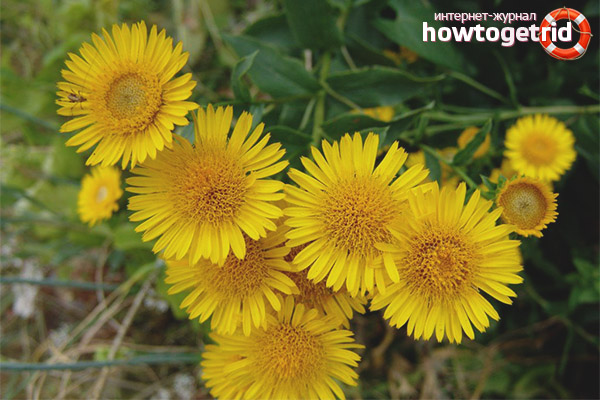

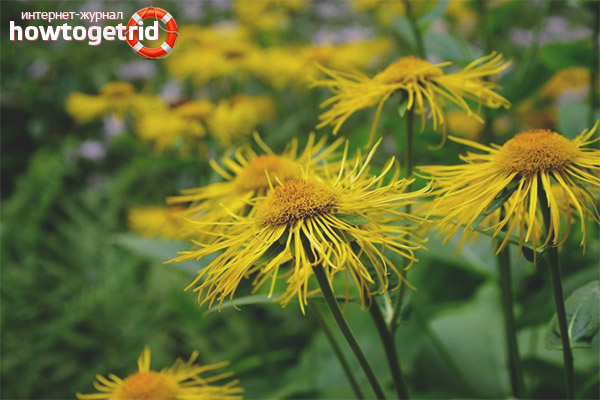
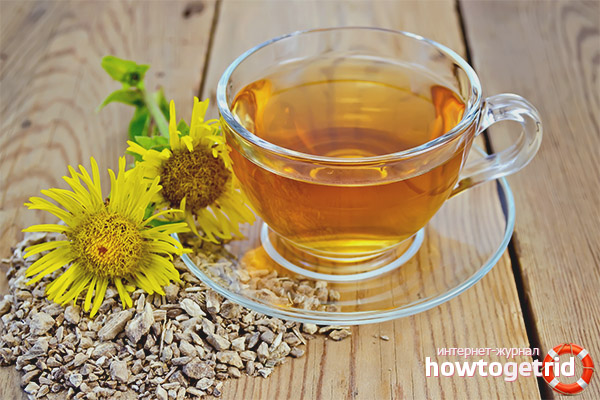
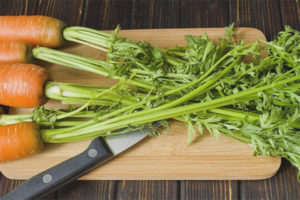
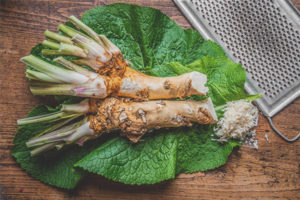
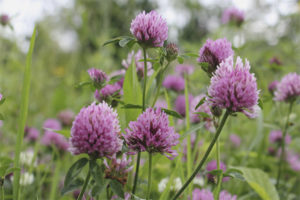

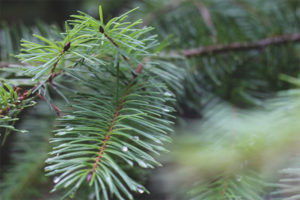

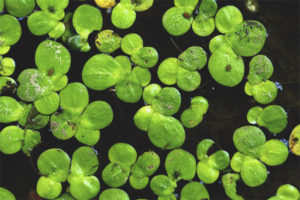
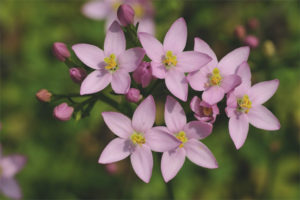
Submit